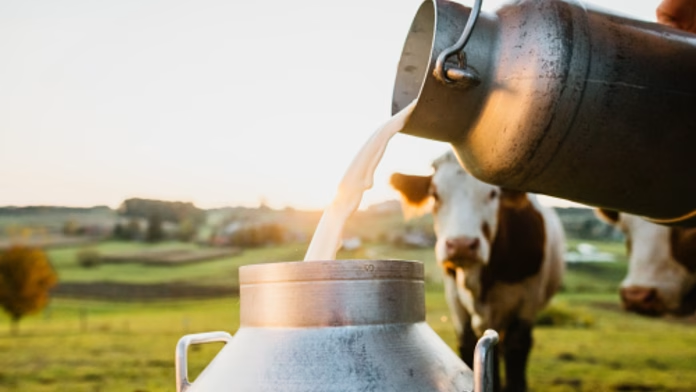According to a senior government official, India may consider importing dairy products to address supply constraints resulting from stagnant milk production in the previous fiscal year.
The official stated on Wednesday that the government will assess the milk stock position in Southern states, where the peak production season has recently started, before deciding to intervene by importing dairy products such as butter and ghee.
According to official data, the country’s milk production reached 221 million tonnes in the 2021-22 period, representing a 6.25% increase from the previous year’s output of 208 million tonnes.
During a press conference, the Animal Husbandry and Dairy Secretary, Rajesh Kumar Singh, reported that the country’s milk production was stagnant in the 2022-23 fiscal year, mainly due to lumpy skin disease affecting cattle. However, the domestic demand for milk increased by 8-10% during the same period due to a post-pandemic demand rebound.
“There is no constraint in milk supply as such in the country…There is an adequate inventory of skimmed milk powder (SMP). But in the case of dairy products, especially fats, butter and ghee etc, the stocks are lower than the previous year,” he said.
He added, “The government will intervene to import dairy products like butter and ghee, if required, after assessing the stock position of milk in Southern states, where the flushing (peak production) season has started now.”
Singh commented that importing milk may not be advantageous at present since international prices have remained firm in recent months.
“If global prices are high, there is no point in importing. We will assess the flush season in the rest of the country and then take a call,” he said.
The shortage will be less in north India where the lean season has been postponed with temperature cooling down due to untimely rains in the last 20 days, he added.
As per the Secretary’s statement, the country’s milk production was stagnant due to the impact of lumpy skin disease, which resulted in the loss of 1.89 lakh cattle last year, along with a surge in milk demand following the pandemic.
“The impact of lumpy skin disease on cattle can be felt to the extent that the total milk production is a little stagnant. Normally, milk production has been growing at 6 per cent annually. However this year (2022-23), it will be either stagnant or grow at 1-2 per cent,” Singh said.
Since the government takes into account the milk production data of the cooperative sector and not the entire private and unorganised sector, “we assume it will be stagnant,” Singh said.
It is a true rise in fodder prices that has led to milk inflation. There is a problem in fodder supply as the fodder crop area has remained stagnant in the last four years, while the dairy sector has been growing annually at 6 per cent, he added.
India’s most recent import of dairy products was in 2011.





